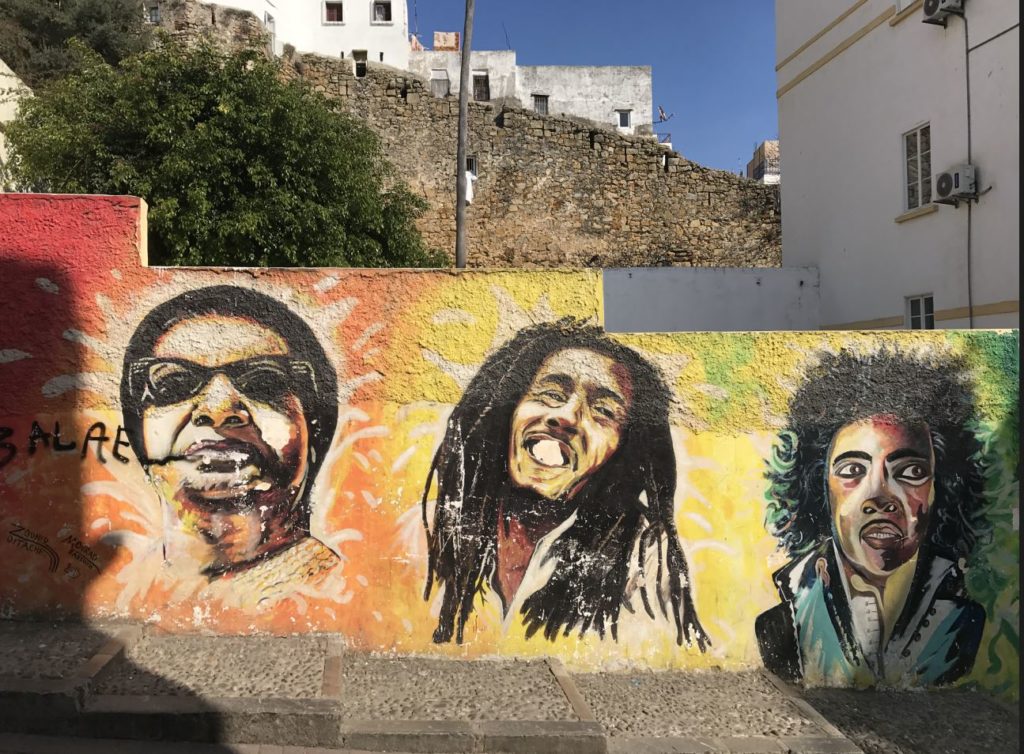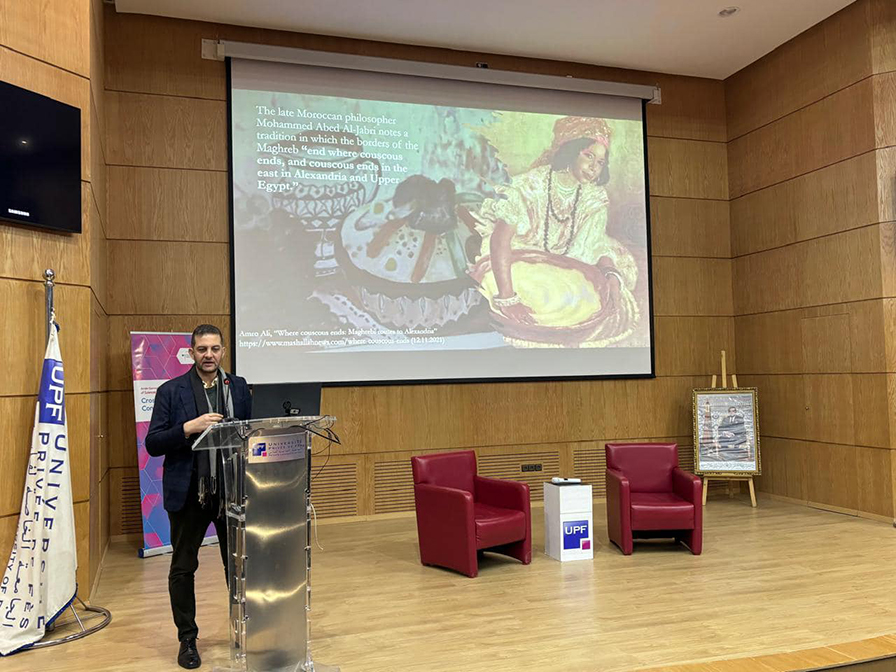
My presentation “Before Borders: Pre-colonial routes and worldviews in the Southern Mediterranean” for the conference/workshop on perceptions of the League of Arab States.
Date: 17 December 2024
Organizer: AGYA / L’Université Privée de Fès
City: Fez
“Our inheritance was left to us by no testament” – René Char
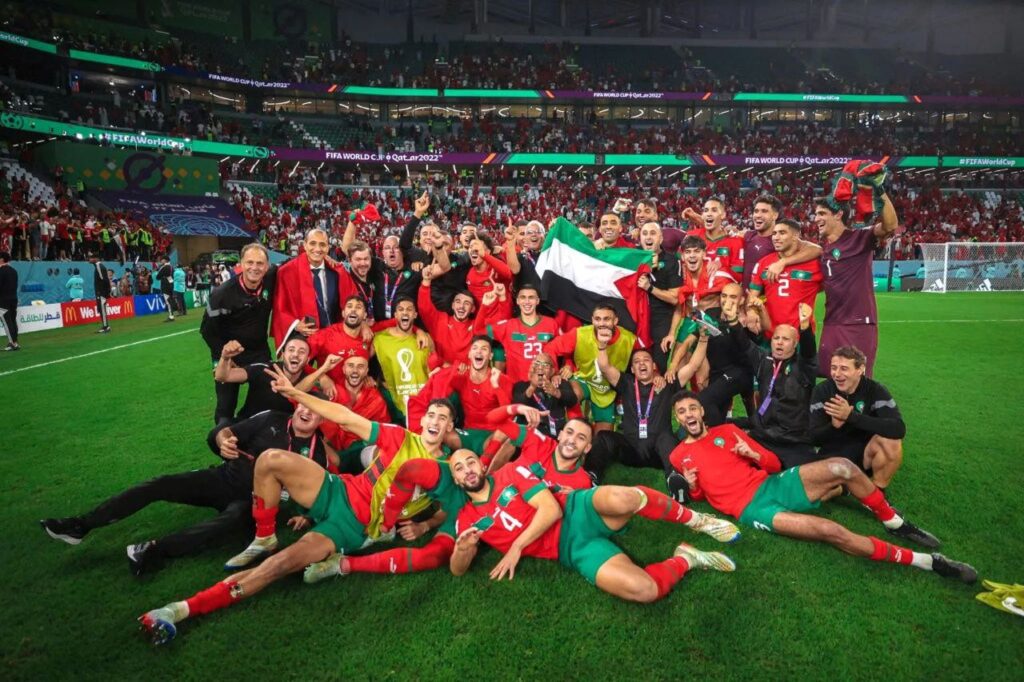
A very short piece for Abu Aardvark’s MENA Academy
The Palestinian question has become the storm at the World Cup in Doha, the most-watched event in the world, with the Palestinian flag emerging as the dominant icon. The repeated raising of the Palestinian flag following every win by the Moroccan team has become a sort of ritual. Supporters and critics have not failed to take notice.
Many will say but this is just a football tournament, how will it help Palestine? This would be true if symbols and signals had no value in our world. The morale boost it provides to the Palestinians is electrifying. That a country at the far corner of the Arab world can be the closest to the Palestinian people, sending out love and support.
But it also points to something bigger. Doha’s World Cup hosting has become a political laboratory in many respects. With the absence of the usual Arab regime choreography, Doha provided an unfiltered and unmediated space in which the Arab realities toward the Palestinian struggle were exhibited in full force. The repeated pro-Palestine chants by Arab fans, their refusal to do interviews with Israeli reporters on the ground, and the Moroccan team flying the Palestinian flag highlights the severe distortion of the normalization process and the stark contrast between Arab regimes and Arab publics.
In recent years, Arab regimes would state or give the impression that the Arab world was sick of the Palestinian cause and would not stand against peace with Israel on that basis (not that the public ever has a choice), despite poll after poll across the Arab world showing that most people were against mending relations with Israel if it were not conditional upon ending the brutal Israeli occupation of the Palestinians. But polls can only tell us so much, in contrast to the live coverage of the coming together of that large demographic from across the MENA region descending onto a small space within a fixed time frame that ignited a loud unanticipated noise and coherent narrative. Those voices said that Palestine would not be thrown under the bus.
What Doha did was provide an unfiltered and unmediated space in which the Arab support of the Palestinian struggle was visually and viscerally exhibited. This World Cup has become a referendum on the normalization facade. The planet’s largest televised event has thrust Palestine dramatically into the spotlight. It seems no regime or public was prepared for that.
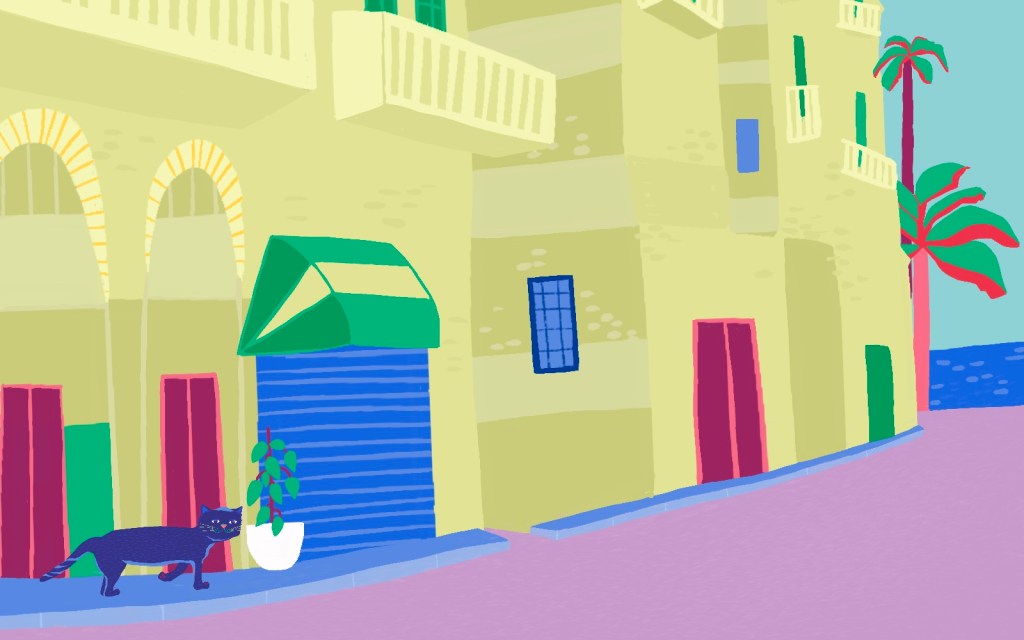
Alexandria’s connection to the Maghreb is often overlooked. But the cosmopolitan port city developed through centuries of migration and influence from the western side of the Mediterranean, up until the colonial era and the building of self-centered nation states.
This essay was originally published in Mashallah Magazine as part of the Mediterranean Routes series
***
“She is a unique pearl of glowing opalescence, and a secluded maiden arrayed in her bridal adornments, glorious in her surpassing beauty, uniting in herself the excellences that are shared out by other cities between themselves through her mediating situation between the East and the West.”
– Moroccan explorer Ibn Battuta on Alexandria, 1326 CE.
***
It was always a quiet curiosity to me as a child in Alexandria that I would address my maternal grandfather as baba sidou when every other child around me referred to their own grandfather as gidou – the customary address to an Egyptian grandfather. It was only many years later that I discovered that baba sidou’s father, my great grandfather, was a Moroccan merchant who left northern Morocco circa 1903 to settle and marry in Alexandria, earning a living by importing goods from his homeland to Egypt. The title baba sidou, used to address grandfathers in some parts of northern Morocco, was a linguistic inheritance of an otherwise enigmatic heritage.
The memory of this form of address to my larger-than-life grandfather, Abdelmeged, was enough to spark an interest in attempting to trace the origins of his father. It also led me to widen my understanding of Alexandria in the great historical narrative of movements and peoples and the role of the Maghreb (here used in the classical sense to include northwestern Africa and Islamic Spain or Al-Andalus 711-1492 CE) in this spectrum.
The Maghrebi character of Alexandria is undeniable when you consider architecture, religious currents, philosophy and historical knowledge production.
The Maghrebi character of Alexandria is undeniable when you consider architecture, religious currents, philosophy and historical knowledge production. The city’s most prominent mosques and districts are named after medieval Moroccan and Al-Andulusian Sufi scholars including Sidi Gaber, Sidi Bishr and Shatby. It is, however, the iconic Abu Al-Abbas Al-Mursi mosque by the sea that stands out, housing the tomb of the scholar who gave the mosque its name. Born in Murcia in the south-east of Al-Andalus in 1219 CE, Al-Mursi moved to Tunis, then finally Alexandria, where he remained teaching for 43 years until his death. The white marble floor of the mosque, which was renovated and expanded over the centuries, underpins a cream-coloured structure with four domes that surround the octagonal skylight. The mosque itself was the inspiration for the Sheikh Zayed Grand Mosque in Abu Dhabi which opened in 2007.
The Middle Ages saw Moroccan colonies emerge in Cairo and Alexandria, with the latter witnessing the construction of a madrasah for Maghrebi students founded by Saladin. By the late nineteenth century, the words jisr (bridge) and juj (pair or two) were frequently heard in the streets of Alexandria, meaning that either Moroccan Darija words had supplanted some Egyptian words in the Alexandrian dialect or it was simply a case of two dialects being spoken.
Why Alexandria?
The late Moroccan philosopher Mohammed Abed Al-Jabri notes a tradition in which the borders of the Maghreb “end where couscous ends, and couscous ends in the east in Alexandria and Upper Egypt.” Of course, Egypt historically has rarely been considered part of the Maghreb, which commonly ends at Libya at most. Yet the obscure tradition is quite interesting as it signals that distant Alexandria must have formed some reference point in the Maghrebi worldview.
The motives to make Alexandria their new home were quite evident. Mohammed El-Razzaz argues that the city was perhaps the furthest one could flee while still linking up to the familiarity of a multicultural harbour city. Alexandria was the last major port before heading to Mecca on the pilgrimage route. It had a vibrant merchant class due to, as the fourteenth century Tangiers-born explorer Ibn Batuta noted, its unique position of a “mediating situation between the East and the West.” In Alexandria, Maghrebi scholars could meet their counterparts from Cairo, Damascus, Baghdad and distant places. It is not difficult to see how couscous ended up as a dish being served in Alexandria.
“The Maghreb ends where couscous ends, and couscous ends in the east in Alexandria and Upper Egypt.”
The relationship between the Maghreb and Alexandria is not only old, it also had a dramatic start fit for a novel or film. In 818 CE Cordoba, an uprising that came to be known as the “Suburb Affair” took place in the southern impoverished district of Al-Rabad, across the Guadalquivir river, and was brutally suppressed by the Al-Andalusian caliph Al-Hakim II. Some 15,000 Cordoba residents fled the tyranny and, because they lived largely off piracy, sailed towards Egypt and seized Alexandria, turning it, in effect, into a city state. This was the first major case of re-immigration back into North Africa from Islamic Spain, including a smaller number that escaped to Fes. While it is possible the Cordobian exiles had local support at first, Muslim and Coptic sources speak of the cruelty that Alexandria endured under their rule. They were expelled a decade later by Caliph Al-Ma’mun when he reasserted his authority over Alexandria. The exiles then left and took over Crete. An indomitable bunch.
In one sense, the violent affair set the historical tempo of the Maghrebi resonance with Alexandria, which paved the way for a peaceful centuries-long story where merchants, travellers, pilgrims, exiles, scholars, philosophers and mystics left the Maghreb and the collapsing Al-Andalus and headed eastward to Alexandria and, at times, to the rest of Egypt. The Fatimid empire that sprung from Tunisia and ruled Egypt (969-1171 CE) facilitated one of the largest population migrations from Sicily (which was part of the Maghreb), Algeria, Morocco, Libya and, especially, Tunisia to Alexandria. The Valencia born Al-Andalusian geographer and poet Ibn Jubayr noted upon his arrival in Alexandria in 1183 CE the multitudes of Maghrebis arriving, and was mesmerised by the city: “We have never seen a town with broader streets, or higher structures, or one more ancient and beautiful … We observed many marble columns and slabs of height, amplitude, and splendour such as cannot be imagined … Another of the remarkable features of this city is that people are as active in their affairs at night as they are by day.”
Piecing fragments
On my first visit to Morocco in January 2018, I was trekking along the mountains of Chefchaouen when I met a farmer named Abdullah who narrated interesting local fables that dealt with Egypt, including one in which Pharaoh Ramses II gave Morocco its name, even while “he preferred to die in Egypt.” The Egyptian pharaoh holds an impressive grip over the Moroccan imagination as the epitome of all evil (I have discussed this in a 2018 photo essay). Fables go both ways. In Alexandria, an aging resident in 2012 told me a local legend of the ghost of Sidi Gaber, named after sheikh Jaber Al-Ansari, a scholar and shepherd who grew up in Al-Andalus shortly after the Islamic conquest of the Iberian peninsula and settled in Alexandria. In June 1940, his ghost saw the Axis warplanes approach as they were about to bomb the British military installations in the Sidi Gaber area. So as to protect his name-bearing Sidi Gaber Mosque, he waved the planes away and consequently – so the story goes – all bombs fell on the nearby Cleopatra Hamamat district in the first week of the campaign.
The oversupply of information and digital asphyxia has de-narrativised the Mediterranean.
These tales are frozen in time, as the routes that enabled them no longer emerge in today’s era of mass media and predictable tourism patterns. The oversupply of information and digital asphyxia has de-narrativised the Mediterranean as it no longer permits for the emergence of fables and an air of mystery to this world.
Land and sea hajj routes that for centuries were essential to the flourishing Maghrebi self-understanding have long since been replaced by air travel, bypassing the symbolically rich ports along the way, Alexandria no less. As Abderrahmane El-Moudden puts it succinctly:
“For many centuries, the pilgrimage caravan was the most important, if not the only, means of travel to the Holy Lands. On their way, Moroccan pilgrims were forced to cross the majority of Arab Muslim lands. This fact alone gives the Moroccan travels a complexity that is reflected in the texts and colours the perception of sacred space and time.”
The author hints at the slow lingering process and toil that came with travelling that carried a high risk of death but enabled the surviving returnees to retell their stories that were chiselled from, perhaps, the longest journey they have ever embarked upon. The idea of such deep and prolonged transcontinental experiences today collapses under the parochial weight of Egyptian and Moroccan nationalist narratives and their desire to demarcate borders, categorise populations, and restrict movements in a region once characterised by fluid boundaries and transnational migration.
The idea of such deep and prolonged transcontinental experiences collapses under the parochial weight of Egyptian and Moroccan nationalist narratives
Scratch the surface of many Egyptians and Maghrebis and you will find foreign links in their family tree. Nationalist constructs can get quite ludicrous if you really think it through. For example, for an Egyptian to claim descent from pharaonic Egypt is to make the impossible claim that the chain of one’s lineage was never “disrupted” in over 2000 years. It would also deny the history that saw movements of peoples including Arabs, Maghrebis, Al-Andalusians, Berbers, Ottomans, Jews and so forth that married into Egyptian Muslim families, or the innumerable Greek, Syrian and Ethiopian Christians that married into Coptic communities. This is not the same as making a cultural claim. One can certainly associate with and draw lessons from a country’s long history and rich traditions. But culture is often too lightweight a contender to the disturbing “races and blood” discourse even if these terms are not specifically used, but implied.
How it ends
It is probably worthwhile to capture a snapshot of the current dynamics between Egypt and Morocco. At the political elite level, tensions surface from time to time, given that Egypt faces a balancing act to placate Morocco and Algeria who have long standing hostilities with one another. In the media, attacks have taken place with a misogynistic stab.
In 2014, Egyptian presenter Amany Al-Khayat – spited by the Palestinian leadership’s appeal to distant Morocco, rather than neighbouring Egypt, for help during the war on Gaza – deried Morocco as a country with a “HIV prevalence rate” and an “economy of prostitution.”
This ignited a wave of anger from Morocco and sparked a diplomatic crisis; Al-Khayat later apologised. In 2020, Moroccan singer Ibtissam Moumni was outraged that Egypt cancelled a concert by fellow Moroccan artist Saad Lamjarred because of rape charges that he was facing: “You think that Saad Lamjarred will hold a concert and harass your daughters, who are like men.” This caused a fury on Egyptian social media and she later apologised on Instagram.
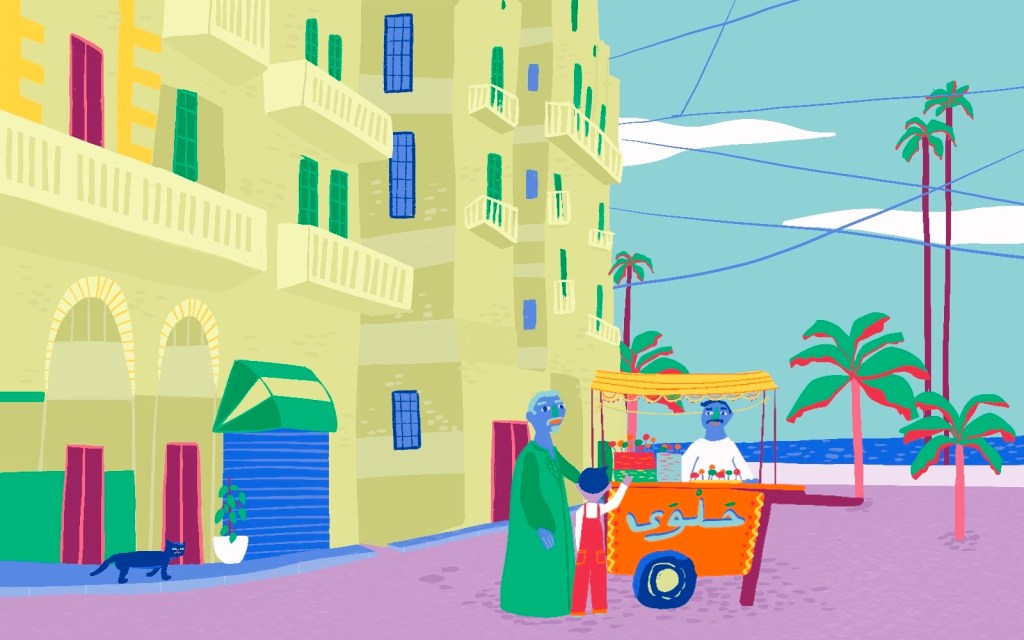
Yet policymakers, media pundits and celebrity bickering usually operate in a world away from coffeehouses, mosques and campuses. Interestingly, Al-Khayat and Moumni’s conciliatory approaches saw them appeal to both countries’ civilisations, rich heritage and intellectual traditions. This, incidentally, is how the countries’ publics view the other. When the former grand mufti of Egypt, Ali Gomaa, labelled the fourteenth century Granada-born Maghrebi scholar Imam Abu Ishaq Al-Shatibi (who is buried in Alexandria and has a major district named after him) as a mere “journalist,” Moroccan scholars were angered and launched a heated rebuttal at Gomaa. At least the once thriving medieval relationship still matters in some sense.
The current passport apartheid system have restricted meaningful mobility, preventing Moroccans and Egyptians from visiting each other freely.
But the above mentioned incidents pale in comparison to the greater tragedy of the North African story. The historical symbiotic relationship between Egypt and Morocco is not as flourishing as it once was. The francophone and anglophone colonial trajectories divided the Maghreb and Mashreq further. The current passport apartheid system, and visa regimes that prioritise EU nationals over someone else from the global south, have restricted meaningful mobility, preventing Moroccans and Egyptians from visiting each other freely.
Moroccans rarely meet Egyptians, which creates a vacuum that is filled with personalities and places like the pharaohs, Um Kalthoum, Abdul Basit Abdus Samad (a famous Quran reciter, 1927-1988), Al-Azhar, the pyramids and, undoubtedly, Mohamed Salah. Perhaps also comedian Adel Imam, who gets a disproportionate amount of attention and has skewed the image of Egypt like everywhere else. The decline of Egyptian soft power through film means that the Egyptian dialect is now understood mainly by the older generation of Moroccans. For Egyptians, the mention of Morocco evokes beauty, enchantment, religious heritage and kinship, with a sprinkle of celebrities or the talk of a recent football game.
For Egyptians, the mention of Morocco evokes beauty, enchantment, religious heritage and kinship.
However, regrettably, Egypt joins the rest of the Arab world chorus in never failing to note sehr (black magic) when the topic of Morocco arises. The idea is that Moroccan women are prone to employing witchcraft to cause some sort of harm to others. This can indicate why Egypt’s opposition media outlets were able to effectively spread the rumour – relying on dubious documents – that the current Egyptian president’s mother was a Moroccan Jew. Not only was there no factual basis to the antisemitic nature of this claim, it also says a lot about the function of Morocco as a distant and mysterious enough place to give the rumour an air of plausibility. The viral claim moved the Moroccan state to officially declare the documents to be a forgery.
On dying and rebirth
Towards the end of the conversation, Abdullah, the farmer in Chefchaouen, mentioned something that grabbed my attention. “A big part of our community migrated to the city of Alexandria over the centuries,” he said. I beamed with a smile.
Soon after, I came to realise that my great grandfather had dropped his Moroccan surname, making it difficult to trace his origins, and picked up an Egyptian name instead, Al-Fayoum, after the oasis town in Middle Egypt. Why he chose that name in particular I could only speculate. Given that it was part of a trade route, I would suspect that he had visited the town. One family tale says that he had fled a conflict taking place in Morocco, most likely the rebellion against the French and Spanish carving out colonial zones of influence in Morocco in the early 1900s. The name change may have been a way to evade the transcolonial collaboration across North Africa to arrest dissidents in distant lands. Additionally, the rising sense of Egyptianness at the turn of the century could have been an invitation for him to become part of the emerging national narrative. This was symbolically realised when he married an Egyptian woman named Baheya El-Sherif.
He knew I loved to go to the top and see my city from there, as if I was a low gliding bird.
My usual routine as a five-year-old in the 1980s was to go to see baba sidou after school. He would take me to the downtown area of Mahatet el-Raml and buy me popcorn or a sweet of sorts. On other occasions, he would wait specifically for the double decker blue tram as he knew I loved to go to the top and see my city from there, as if I was a low gliding bird. I would take out chalk from my pocket that I had snatched from the blackboard at school and start writing on the floor of the tram, both in Arabic and English, to the delight of the curious onlookers. One passenger told my grandfather that, “he will be something great in the future someday.” We would disembark in Azarita where he grew up, attend his favourite mosque for the asr (mid-afternoon) prayer, then he would go to the coffeehouse to meet friends and smoke sheesha while I played in the street in front of him.
This routine also included a visit with baba sidou to see his mother Baheya in the same area. Although her husband Al-Fayoum had died long before I was born, I was able to glimpse the last two years of her life, as a bedridden 95-year-old widow with her browned caramel skin drooping down gracefully. She had a certificate that qualified her as a midwife – I cannot remember if she hung it on the wall but she was extremely proud of the achievement – having received it at a time when education and qualifications for Egyptian women were hard to come by. A once outspoken wealthy woman who rose from the working classes, she ran coffeehouses and had her own horse-drawn carriage, but due to dwindling fortunes now lived in a tiny apartment. She died soon thereafter.
With his death, along with that of my great grandmother, came the end of one era as I knew it in Alexandria.
A few months later, her beloved son, the 69-year-old Abdelmeged – baba sidou to me – entered his beloved mosque in Azarita and, while in the kneeling position, passed away. The stoic worshippers shifted him so that he would lean against the wall, still kneeling, and then prayed over his body. With his death, along with that of my great grandmother, came the end of one era as I knew it in Alexandria. The time of seamless movement of personalities and their lives across the southern Mediterranean had dried up in the shadow of the mighty nation state and the hardening of borders.
My great grandfather, Al-Fayoum, who I know little about, became a sort of vector point. He left no photographs or written evidence – or I have yet to locate them – and thus I have relied on fragmented oral testimonies. My fickle memory of my dying great grandmother, a formidable Egyptian woman who married a stranger from the other side of the southern Mediterranean and edge of the Arab world, still lingers in my mind. Two simple words, baba sidou, encapsulates my own Egyptianness and sheds a new light of complexity on my Egyptian parents; one that is accomodating of complicated histories and sits well with my multifaceted Muslim, Arab, Egyptian, North African, Mediterranean, Alexandrian, and Australian identities.
Towards a reverse journey
In the summer of 2018, while in Alexandria, I made an error in my booking of a flight to Spain to attend a conference in Seville. I ended up having two tickets to Madrid that were non-refundable, but I could reschedule one of the flights. After the conference, I made my way to Cordoba and then to Granada. There was a restlessness to my presence in these two glorious cities. Cordoba is a place where you either find love or bring someone you love. In Granada, I stood before the gates of the Alhambra but could not bring myself to enter it. It is so majestic that entering it alone would have felt like selfishness.
The stopover in Casablanca had fate written all over it, as I had a chance encounter with a Moroccan doctoral researcher.
At the back of my mind throughout the trip was the costly accidental ticket. The rescheduled flight was for March 2019, a very inconvenient date during the teaching semester at the American University in Cairo. Since the airline would not allow me any later date, and because I was not quite yet in a holiday mood, I decided to pepper the trip with academic engagements.
The stopover in Casablanca had fate written all over it, as I had a chance encounter with a Moroccan doctoral researcher. After a week in Madrid, I booked my return flight with a three-day layover in Casablanca just to get to know this person better.
As we walked along the Casablanca shore one day, she narrated her life and showed me a black and white picture of her grandfather, a merchant riding a horse at the pyramids. She talked about her paternal ancestors, who were expelled from southern Spain in the closing curtain of the long Spanish Reconquista era, settled in the Moroccan port city of Tetouan in the fifteenth century and remained there until her great grandparents’ time. After that, the descendants migrated south. For a moment, I joked and wondered, what if Al-Fayoum had ever crossed paths with her great grandparents.
I told her that the hardest question I could ever be asked is “where is home?”
It was as if I was on the reverse journey of my great grandfather, or that of the Andalusian shepherd boy Santiago in Paulo Coelho’s The Alchemist (in my defence, I was young when I read the book), who has recurring dreams of a hidden treasure at the pyramids of Giza. His journey across North Africa passes through the town of Al-Fayoum where he meets the alchemist and falls in love with a woman named Fatima.
The inquisitive researcher and I talked about the world and how I never knew a proper sense of home, having lived in several places. I told her that the hardest question I could ever be asked is “where is home?” She gave an evocative response that broke the long silence of my universe, “I will be your home.” Her name is Kenza, meaning “hidden treasure” in Arabic.
After a long series of obstacles, including a pandemic that is not kind to movement, we eventually married last summer. Hopefully someday, we can make it to Cordoba and, maybe, eventually cross the gates of Alhambra in Granada. Inshallah. For the time being, we will head to Alexandria, and do the ritual walk along the corniche until we arrive at the wave breakers along the Sidi Gaber shore, only to sit down, facing the sea, eating couscousy bel sukkar, sweet couscous cooked the Egyptian way with shredded coconut, butter, nuts, sultanas, cinnamon and hot milk.
***
References
Eickelman, Dale F (eds.) Muslim Travellers: Pilgrimage, Migration, and the Religious Imagination Comparative Studies On Muslim Societies (1990).
Norman Rosh, A. M. R. (1994). Jews, Visigoths, and Muslims in Medieval Spain: Cooperation and Conflict. Leiden, E.J. Brill.
Razzaz, M. E. (2013) In the Footsteps of Mystics and Intellectuals: The Andalusi Legacy in Egypt Rawi Magazine.
Von Grunebaum, G. E. (1970). Classical Islam: A History, 600 A.D. to 1258 A.D. New York, Taylor & Francis.
Woidich, P. B. a. M. (2018). The Formation of the Egyptian Arabic Dialect Area. Arabic Historical dialectology: Linguistic and Sociolinguistic Approaches. C. Holes. Oxford, Oxford University Press: xix, 422 pages.
***
All illustrations for the Mediterranean Routes series were produced by Atelier Glibett in Tunis.
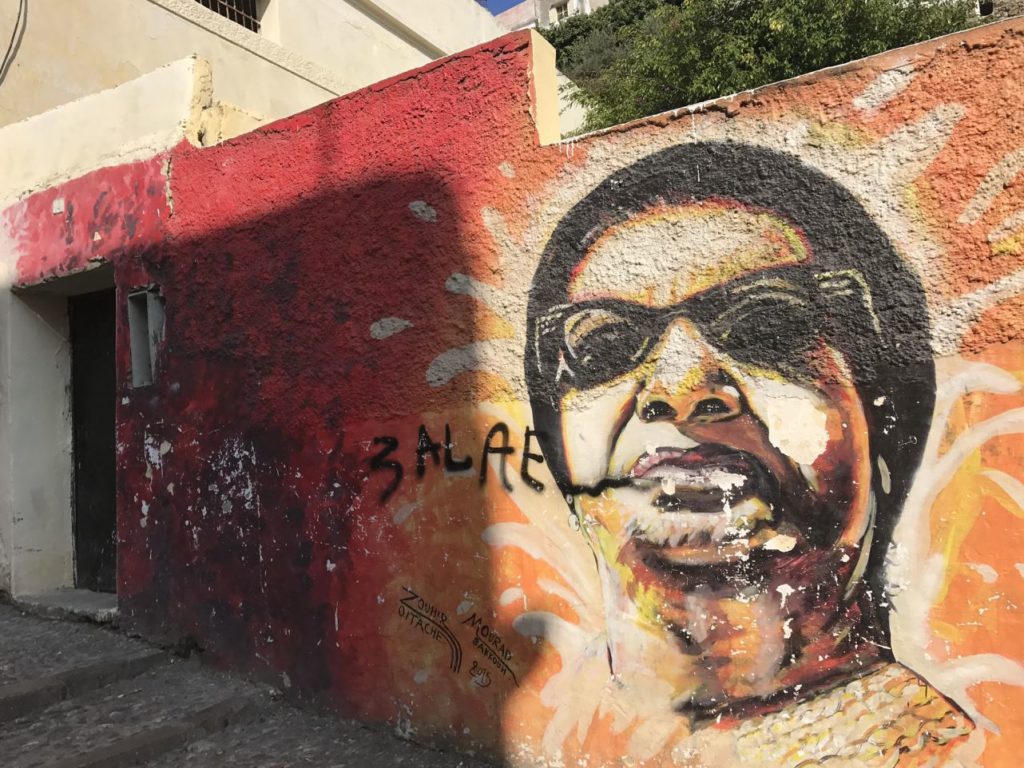
Republished in openDemocracy
I cracked a self-deprecating joke to a friend in Cairo upon my return from Morocco, “I think Moroccans have a highly favourable view of Egyptians because many have never actually met one.” I did not encounter a single Egyptian through my travels through Morocco. What it often means is that you might be the first Egyptian a Moroccan ever meets. A matter not unfamiliar with my colleagues who have experienced this. This was surprising given the intimate history between Egypt and Morocco. Therefore, the idea of Egypt in the Moroccan worldview was not usually based on tangible encounters as much as it was based on popular arts and religious discourse.
The Egyptian dynamic accentuated the already quintessential Moroccan hospitality. I was overwhelmed with the warmth and openness. From the heartfelt greetings to the insistence of staying over peoples homes, to the complementary desserts and soft drinks at restaurants. Egypt’s soft power at the geopolitical level may lay in tatters, but at least it has enough spark to result in receiving free caramel tiramisu and Miranda lime.
Facetiousness aside, I thought the recent Economist article on the decline of Egyptian Arabic (read: Egyptian culture) over the Arab world failed to capture the complexities of how influence works. The article certainly makes valid points, particularly with the decline of the linguistic monopoly Egypt once held, but answers cannot be sought from the Dubai International Film Festival and Arab Idol. To neglect, for example, how Egypt functions in the lower socioeconomic strata and religious discourse in areas of the Arab world would be to distort the image.
While I am not claiming to have done a comprehensive methodological study (although I would hope to do so in the near future), I have sought to diversify the spaces I engaged with to see how Egypt themes and references operate in Rabat, Marrakesh, Fez, Chefchaoun, and Tangier. I focussed on lower-socioeconomic neighbourhoods, upscale cafes, but the heaviest focus was given to mosques and coffeehouses, simply because it was the expected and common space of discussions. I preferred the free-flowing conversations and story-telling format, in which I extracted themes and meaning from the pattern of discussions. Unfortunately, I did not spend enough time in Casablanca to gauge substantial perceptions (which I feel is a weakness in my notes given it is the largest city). While I did some questioning, it is not wide enough and deep enough to merit writing it. In light of the above factors, this piece should be looked upon as an essay with meaningful indicators.
Egypt appeared to hold the strongest sway among the poor, middle class poor, and the religious streams of Morocco. This was reflective in the appeal to the popular arts, literature, or religious texts. Statements such as “Egypt is our dear brother”, “Egypt and Morocco are like this” (with hands clasped strongly together) or masculine-fuelled lines such as “Egypt has real men” were commonly heard. There is even a cross-sectional friendly inside joke among Moroccans to the timeless Egyptian claim Masr Um al-dunya (“Egypt is the mother of the world”)¸ they respond weh Maghrib abuha (“and Morocco is [Egypt’s] father”). It was partly funny because everyone telling me thought I was always hearing it for the first time.
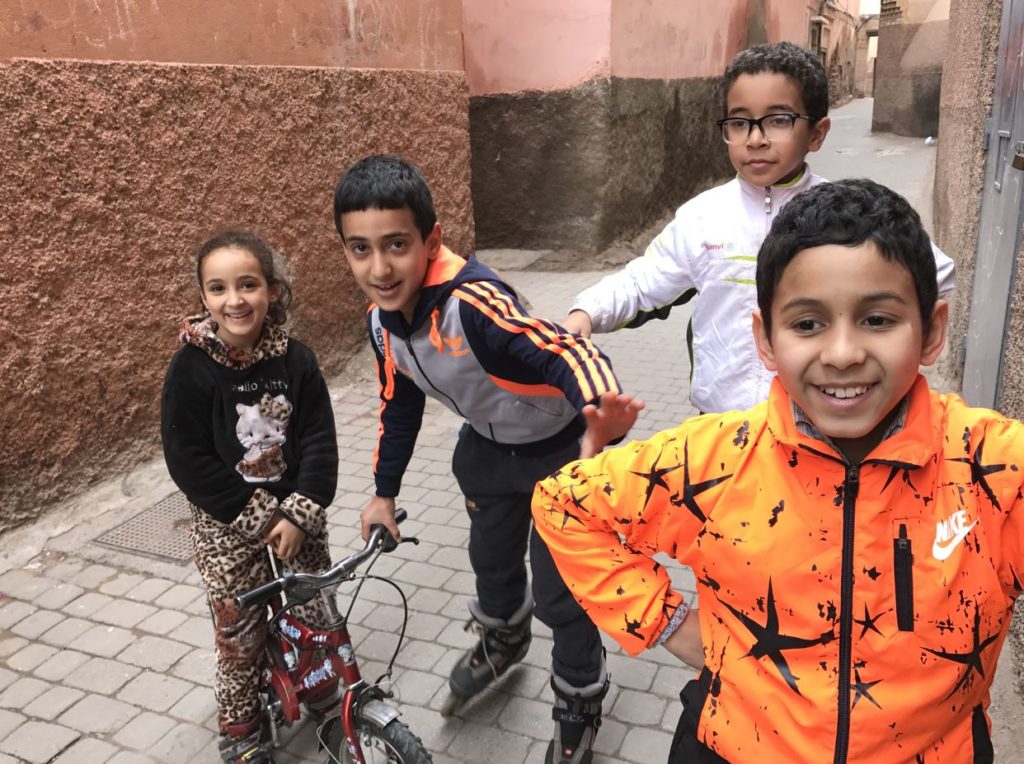
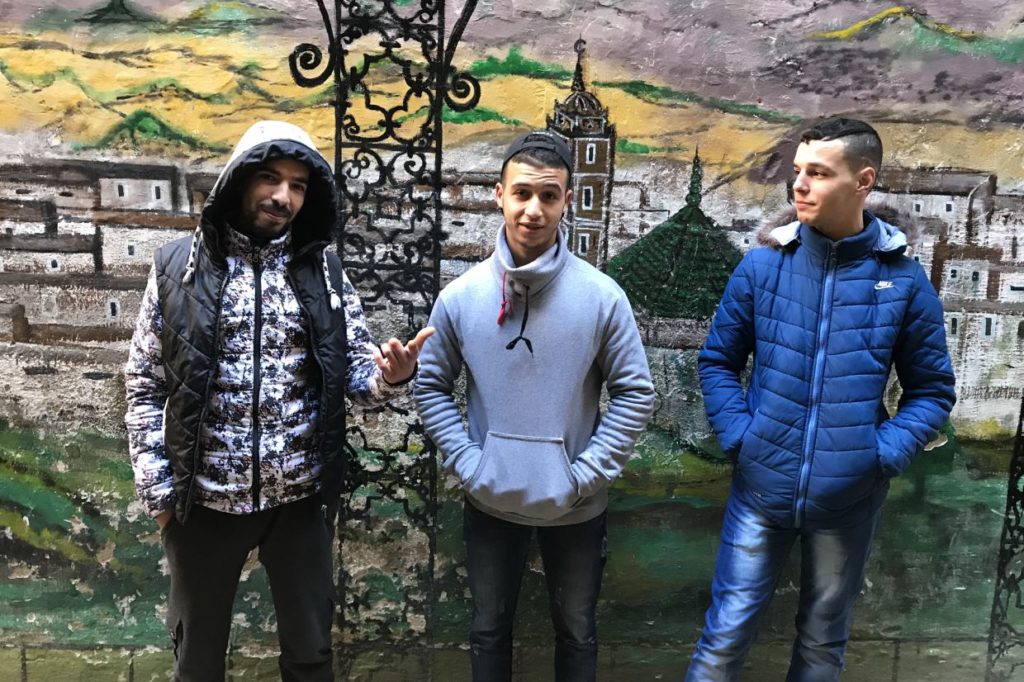
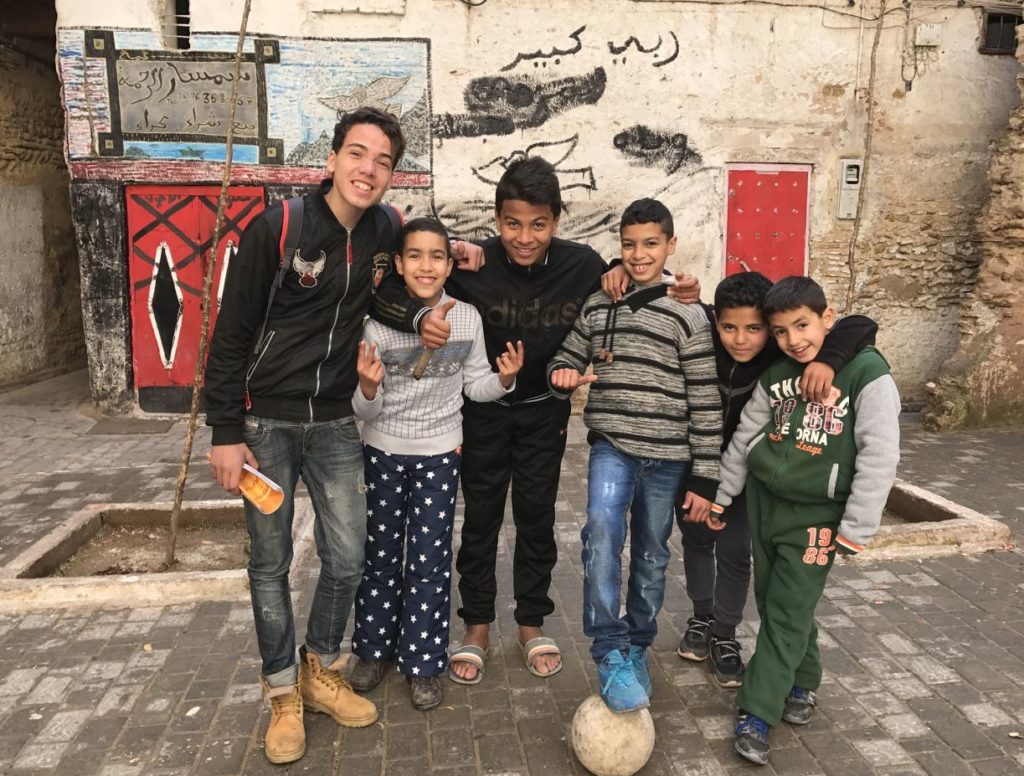
The favourable view of Egypt begins to fragment as you move up the socio-economic ladder. Residents of Tangier who portrayed themselves as socially mobile, liberal, globalised and tinged with a Euro-centric view, could at times express a ridiculing view of Egypt (the above “inside” joke now takes on a different meaning) as a backwater of poverty and extreme conservatism.
However, this alternates among these same social groups who might identify with a clear religious, Arabist or leftist bent, or have a liberal arts background. Accordingly, there was a sort of sympathetic heartbreak expressed at “what has become of Egypt,” with Cairo’s declining regional influence, harmfully erratic position on Palestine, the diminishing quality of films and a media circus gone crazy.
Om Kalthoum songs could be heard in shaabi (common, working class) restaurants and AbdelHalim Hafez in the souks. What surprised me was to hear the mahraganat music played by Chefchaoun’s disenchanted youth from their mobile phones. Adel Imam was still it seems the most popular actor, Ramez Galal was disdained not just for the mindless pranks he played in Morocco in Ramadan but may have come to symbolise the disheartening state of Egyptian entertainment. Egyptian authors, from Naguib Mahfouz to Youssef Ziedan, featured prominently in bookstores and were read by the Moroccan reading public that I encountered.
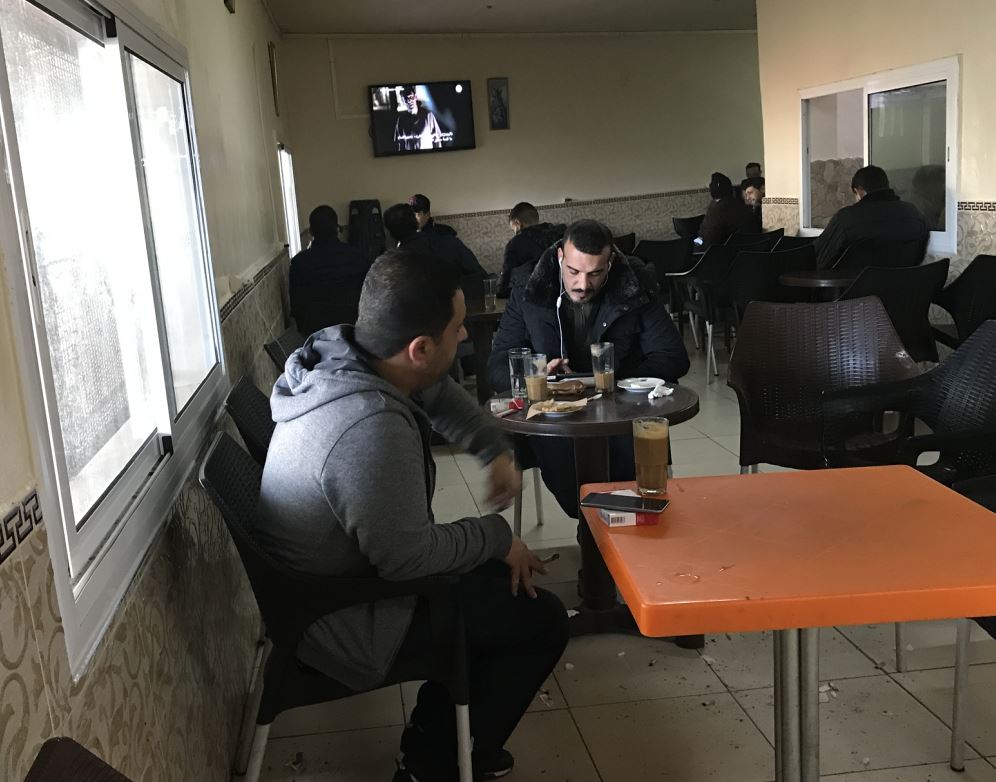
On the political front, not a single Moroccan had a positive view of Egyptian president Sisi when his name was mentioned. However, it was not unusual for imams and worshippers at mosques to tell me the religious precept “do not rebel against the ruler,” alluding repetitively that Egyptians would have lived “better” if they did not overthrow Mubarak.
Gamal Abdel Nasser was surprisingly only mentioned twice (mainly in a neutral way). A few references were made to his era. While Morocco had a marginal role in the pan-Arabist wave of the 1950s and 1960s, it was interesting to see (or not) its lingering effect.
University students and recent alumni developed a shared narrative with Egypt as a result of the 2011 Egyptian revolution and the Arab uprisings, but this identification has become more ambivalent over the chaotic years (This area I did not pursue in any worthwhile depth but there are studies that have explored the question of Moroccan identity after 2011).
When it comes to religion, Egypt performs the strongest. With even children in the kasbahs mentioning Abdul Basit Abdus Samad (a prominent Quran reciter, 1927-1988) in the same breath as the pyramids. Al-Azhar was, predictably, mentioned frequently.
Pharaoh Ramses II was the most commonly referenced figure in regards to Egypt. The pharaoh of the Quran and Old Testament projects an unusual hold over the imagination. While in urban Egypt, the use of ‘Pharaoh’ in the popular discourse can often serve no more than a superficial labeling of every dictator who shows up on the scene; he was treated by Moroccans, however, as a sort of existential question on evil and oppression.

In mosques, the imams and congregants alike frequently invoked the following Quranic verses to not only frame Egypt, but, at times, to position their conversations with me.
“And We revealed to Moses and his brother, saying: Take for your people houses to abide in Egypt and make your houses places of worship and keep up prayer and give good news to the believers.” Jonah 10:87
“And the Egyptian who bought him said to his wife: Give him an honorable abode, maybe he will be useful to us, or we may adopt him as a son. And thus did We establish Yusuf in the land and that We might teach him the interpretation of sayings, and Allah is the master of His affair, but most people do not know.” Jonah 12.21
“Then when they came in to Yusuf, he took his parents to lodge with him and said: Enter safe into Egypt, if Allah please.” Yusuf 12.99
And Pharaoh proclaimed among his people, saying: “O my people! Does not the dominion of Egypt belong to me, (witness) these streams flowing underneath my (palace)? What! see ye not then?” Zukh’ruf (The Gold Adornment) 43:51
Apocryphal accounts arose when you tapped into Moroccan folklore. While Abdullah, a farmer in Chefchaouen, narrated some sound and verifiable stories such as “..A big part of our community migrated to the city of Alexandria over the centuries.” It was the tales that I found quite interesting: “[Pharaoh] Ramses came here and gave Morocco its name. Yet he preferred to die in Egypt.”
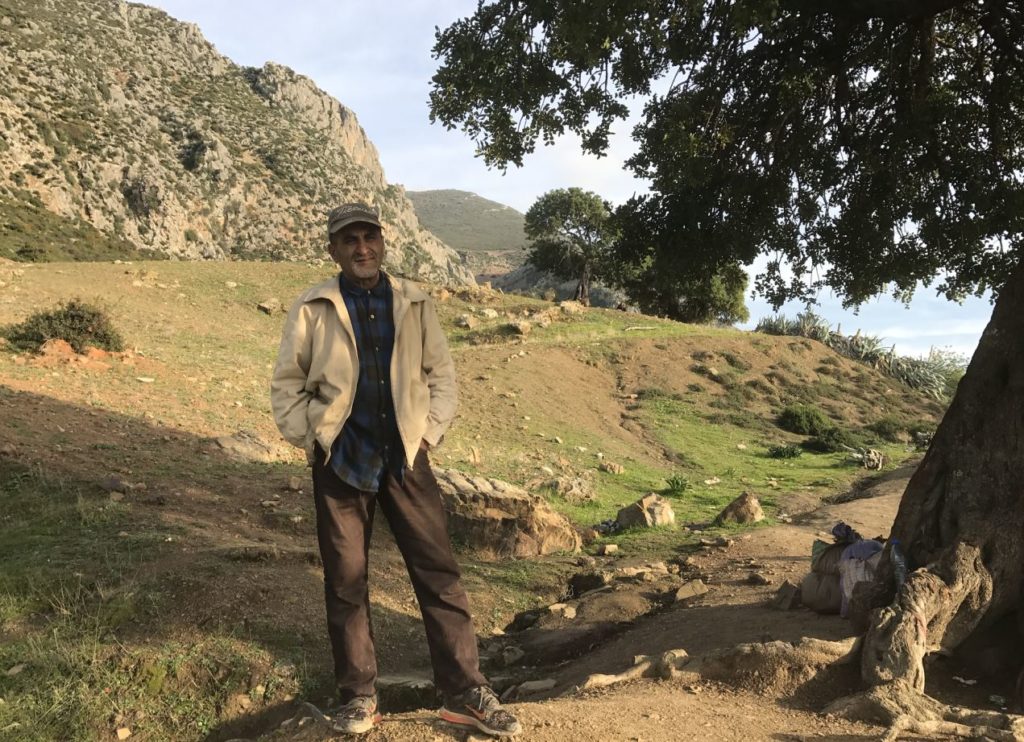
The hadiths on Egypt and other matters were also quoted, but it was the below hadith by Islam’s prophet that struck me because of how I understood its function in Egyptian discussions.
Abu Zar reported that Allah’s Messenger (Sallallahu Alaihi wa Sallam) said: “You will conquer Egypt, a land where Qirat (a measure of weight and area) is used. When you conquer that land, you have to treat its people kindly since they have a right of kinship upon you.” [Reported by Imam Muslim Ahmad]
I developed a different relationship to these hadiths in Egypt (here I mean mainly Cairo and Alexandria). When they were quoted, it was difficult to tell how much of it was clothed in nationalist sentiments. The absence of humility, at times, of narrating it did not help. But my concern grew at how it can be used to disarm activism and accept the status quo, as if the divine simply takes care of Egypt, the Prophet blesses it, and thus human action need not apply to better a situation, for eternity.
However, voiced by Moroccans who are not entangled with Egypt’s endless political problems gave it a somewhat impartial sincerity. For example, Imam Ahmed, a warm and humble man at a small mosque in the mountains of Chefchaoun, repeatedly used the word Qirat to drill into me the gravitational importance of Egypt, at least how he understood it.
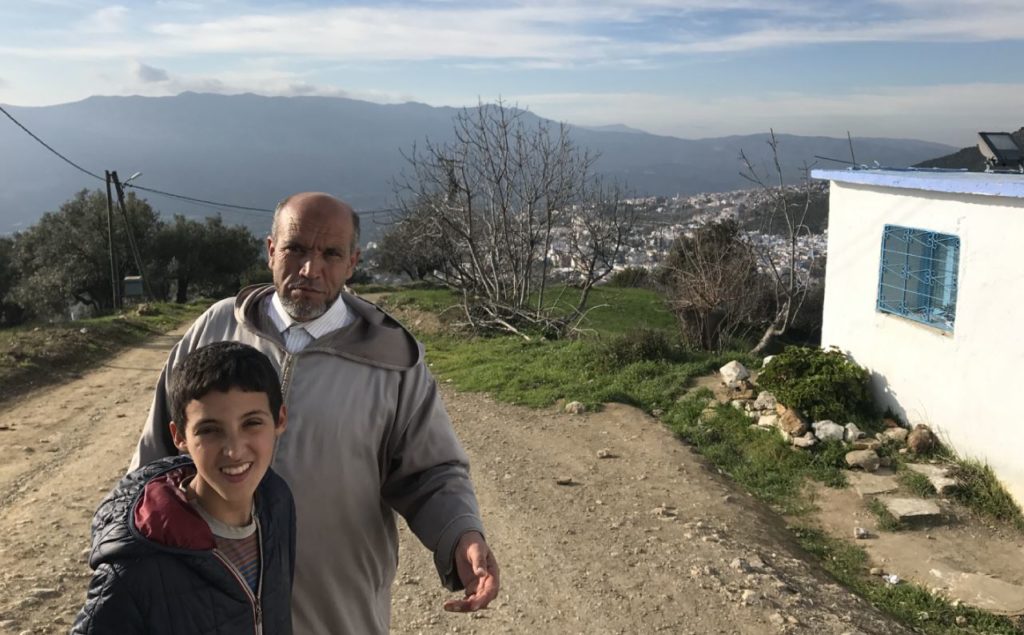

The religious and mosque-attending Moroccans correlated strongly with a positive view of Egypt. In fact, I did not find a single exception to this rule. While the Amazigh people (mainly in Fez and Chefchaoun) emphasised the Islamic relations with Egypt at the expense of the Arab dimension, they did not necessarily shy away from the latter (it’s complex to explain, but I will be reductionist and say that it came down to the perceived problem being with Moroccan Arabism than the Egyptian version).
Transnational groups like Islamists and Sufis had visiting relations with their counterparts in Egypt. These relations were formed either on the Hajj (pilgrimage) to Mecca, visits to key mosques or educational spaces popular with Sufis. For Islamists, it was not unusual for friendships to have been formed in France where they once worked (but returned to be in a “Muslim country”). Their lived experience of Egypt seems to be fundamentally shaped by these close relations.
Final Thoughts
Some 700 years ago, the Moroccan explorer Ibn Battuta narrated his encounter with Cairo. What is fascinating is that today’s Moroccan descriptions of Egypt can easily paraphrase his account.
“I arrived at length in Cairo, mother of cities and seat of Pharaoh the tyrant, mistress of broad regions and fruitful lands, boundless in multitude of buildings, peerless in beauty and splendour, the meeting-place of comer and goer, the halting place of feeble and mighty, whose throngs surge as the waves of the sea, and can scarce be contained in her for all her size and capacity.” (1326 CE)
One should also take into consideration how the Moroccan imaginary of the Arab and Muslim world developed over the centuries:
“For many centuries, the pilgrimage caravan was the most important, if not the only means of travel to the Holy Lands. On their way, Moroccan pilgrims were forced to cross the majority of Arab Muslim lands. This fact alone gives the Moroccan travels a complexity that is reflected in the texts and colours the perception of sacred space and time.”
Abderrahmane El Moudden, “The Ambivalence of rihla: community integration and self-definition in Moroccan travel accounts, 1300-1800” in Eickelman, Dale F (eds.) Muslim Travellers: Pilgrimage, Migration, and the Religious Imagination Comparative Studies On Muslim Societies (1990) p 73.
Modern Morocco is a vast social reservoir that needs to be explored further in juxtaposition with Egypt. The other side of Egyptian influence is that Morocco shaped Egypt over the centuries, among them: dynasties, architecture, religion and philosophy. I do not see why we cannot better examine some of their concepts and approaches to help address questions that trouble us in Egypt’s urban, social and religious settings. That is for another essay.
Finally, the street art of Oum Kalthoum shown at the start can put matters in perspective when you see it as part of a larger mural in Tangier. Instead of simply the decline of Egyptian influence, it can perhaps be said the stage just got more crowded.
